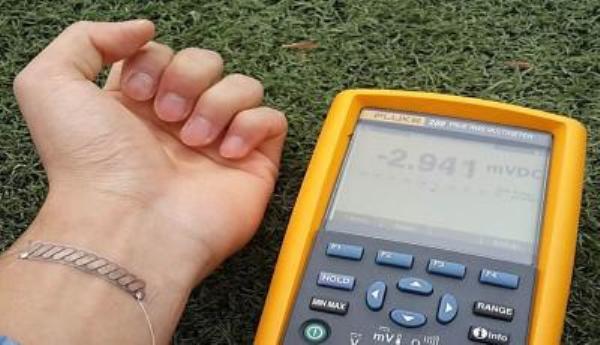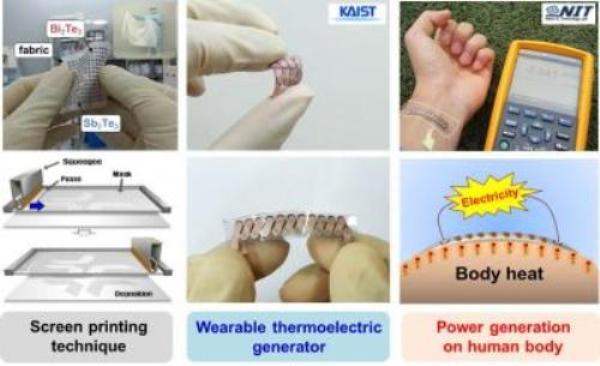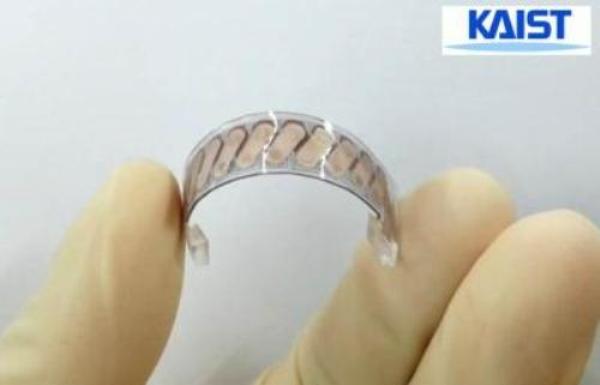Recharge Devices Using Your Own Body with This Thermoelectric Generator
Converting heat to electricity is not news. Thermoelectric generators (TE) have already been introduced in as early as 2008. These are also known as Seebeck generators as they make use of the “Seebeck Effect” in converting temperature differences directly into electricity. The technology is not yet mature enough for wider commercial application. Nevertheless, the concept exists and it only needs a little more R&D work to become more usable.
Just recently, scientists from Korea Advanced Institute of Science and Technology (KAIST) reported that they have found a way to address the power shortage problem encountered in wearable and mobile devices. In a press release, KAIST scientists announced that they have developed a thermoelectric generator on glass fabric for wearable electronic devices. This new technology is touted as the solution to the poor battery life of most wearable devices. Results of their earlier research, however, were already published online in the March 14 issue of “Energy & Environmental Science.”
Specifications and Mechanics of the KAIST Thermoelectric Generator
-
Light and Flexible – As something intended for wearable use, the KAIST thermoelectric generator is built to have minimal footprint while possessing extreme flexibility with an allowable bending radius of 20 millimeters. This flexibility allows the generator to maintain efficiency even when bent upwards and downwards for up to 120 cycles.
-
Excellent Design and Power Generation – The KAIST TE generator is created by printing thermoelectric substances on glass fabric. P-type and n-type semiconductors are applied to the glass fabric. The glass fabric serves as the upper and lower substrates of the TE generator, sandwiching the inorganic TE materials. This design is considered a breakthrough in the designing of generators as developers of the KAIST TE generator claim that it is the first thermoelectric generator that is not bulky hence suitable for wearable applications. Additionally, this TE generator is said to be capable of generating power outputs that are tens of times higher than those of previous pliant TE generators. According to one of the KAIST scientists, their 10 cm x 10 cm TE generator is capable of producing 40 mW of electricity based on the 31 °F temperature difference between the human skin and the surrounding air.
-
Efficient Operation – TE generators obviously don’t compare to the efficiency of traditional power generators. However, the KAIST TE generator is a big leap from similar generators developed in previous years. As detailed on its press release, it features a self-sustaining structure that gets rid of the thick external substrates usually used to hold inorganic TE materials. The non-use of these external substrates allows the KAIST TE generator to convert more heat into electricity.
Applications
The design of the TE generator from KAIST is particularly aimed at two applications: wearable devices and embeddable devices.
-
Wearable Devices – With its thinness and lightness, this TE generator is indeed appropriate for wearable gadgets. As shown on the photo below, the generator can be attached to the wrist or to other hot parts of the body comfortably and inconspicuously.
-
Embeddable Devices – This was not particularly mentioned by the KAIST researchers but it is logical to assume that the thin and light TE generator would also be applicable to embeddable tech. The generator may not be embedded deep into the skin but only attached externally and connected to the embeddable device in a seamless fashion.
However, it is also worth pointing out that the device developed by the scientists from KAIST can be scaled up for bigger applications. Its relatively efficient harnessing of thermal energy can also be applicable to cars, aircraft, space exploration, factory operation, and even in the field of petroleum or oil processing. All the excess heat produced by cars, planes, factory equipment, and pipes can be converted to electricity using KAIST’s efficient TE generator.
Costs
Details on the possible costs of this technology are not available yet. Even the plans for commercializing it haven’t been discussed yet. Nevertheless, the outlook is great. It may not take that much time for the technology to become available in wearable tech products like smart watches, Google Glass, and smart bands.
Indeed, 2014 appears to be a great year for technological advancements. After the news on the US Navy’s “seawater as fuel” technology, here comes another welcome news about a technology that will improve wearable and embeddable devices by leaps and bounds. It would be amazing to see the next smartwatch bearing this new TE generator technology.


